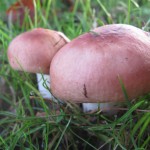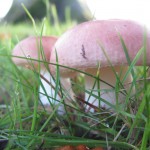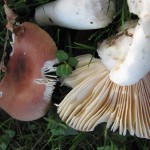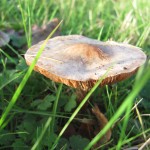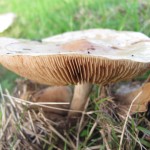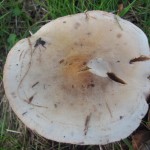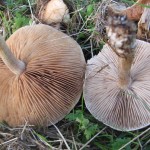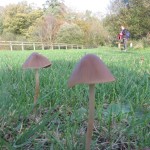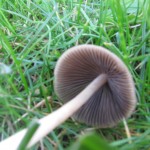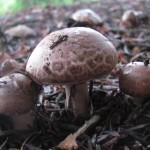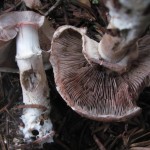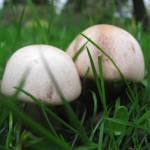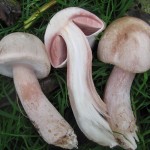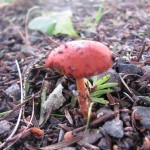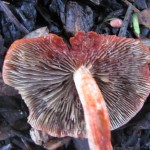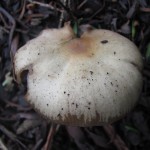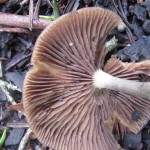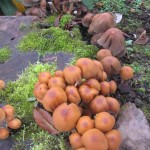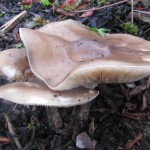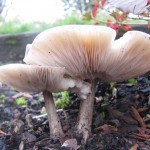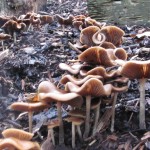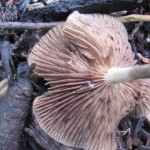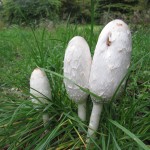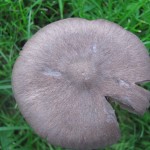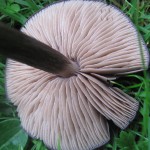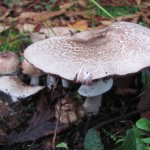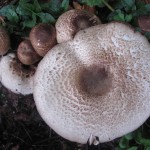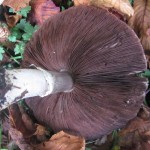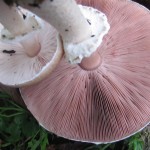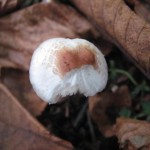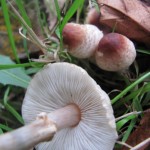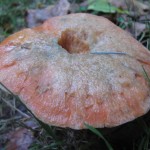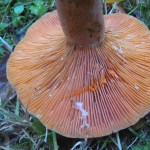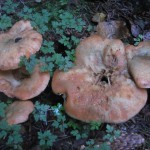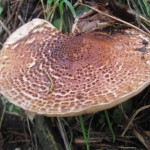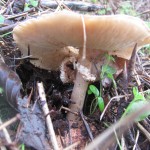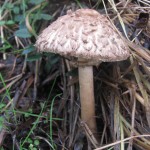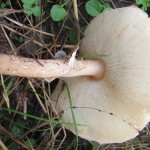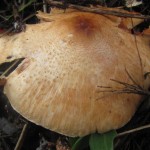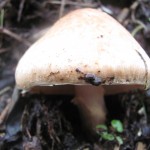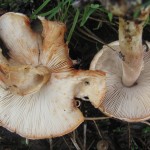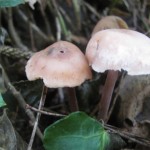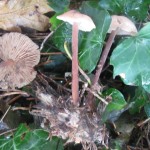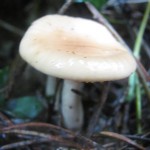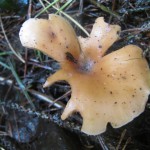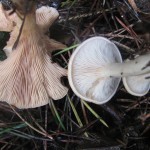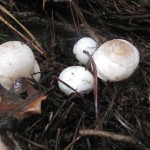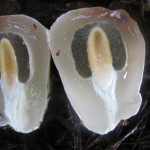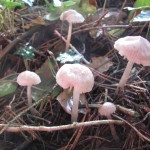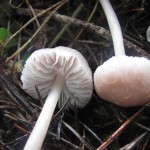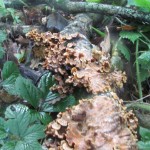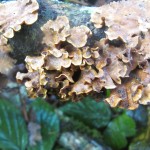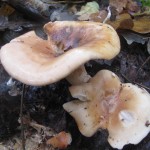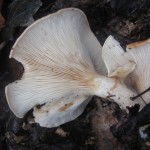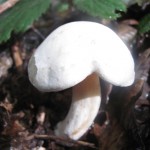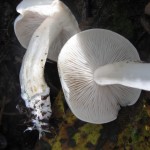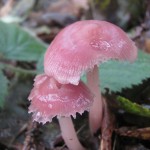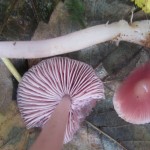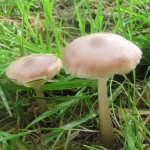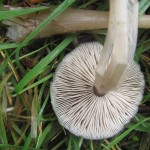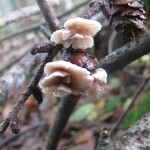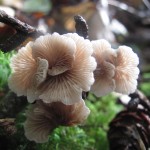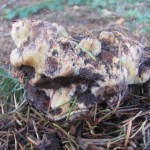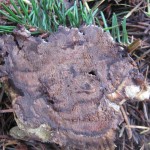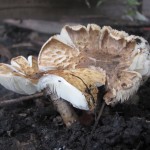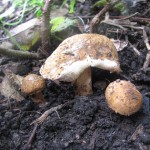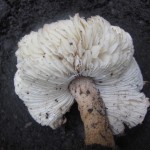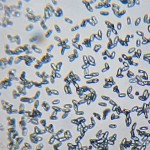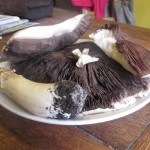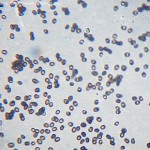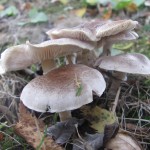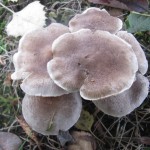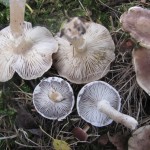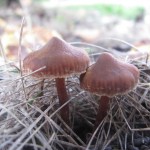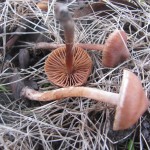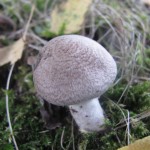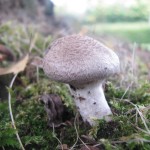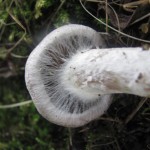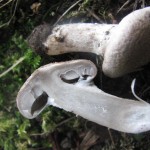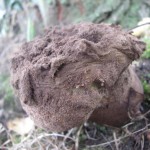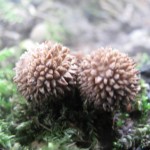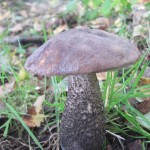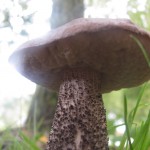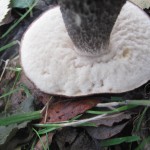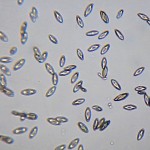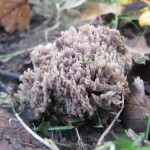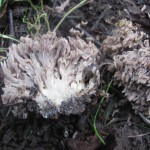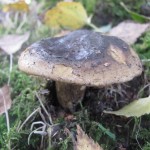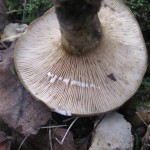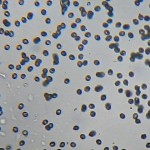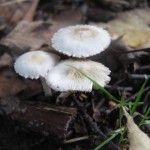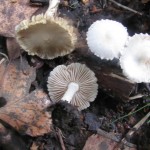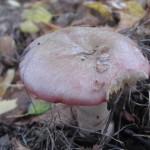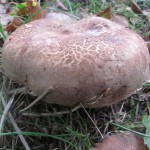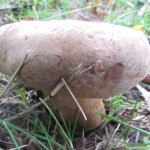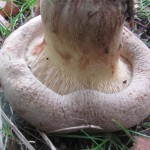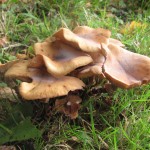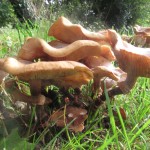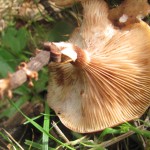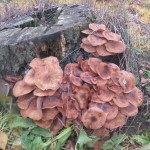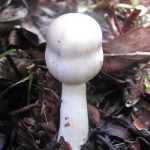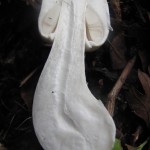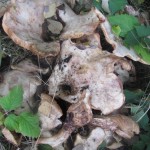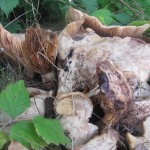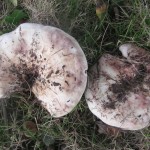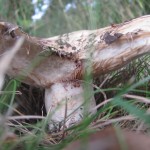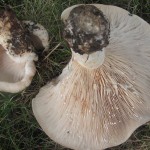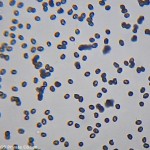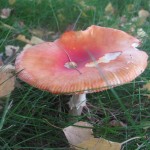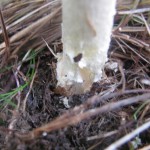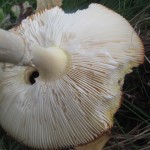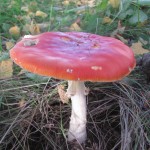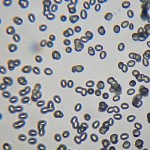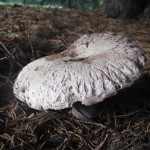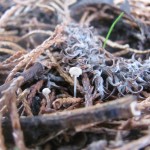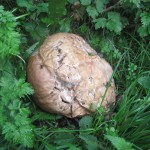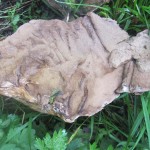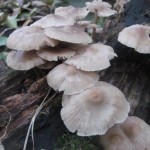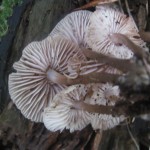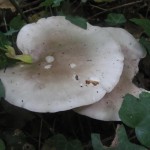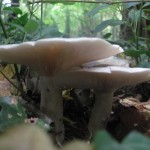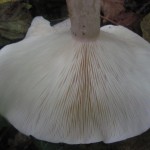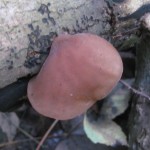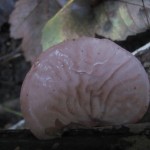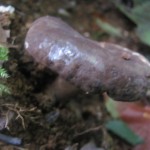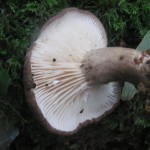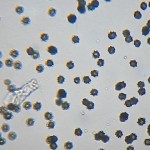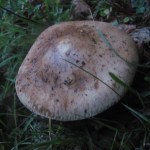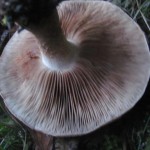Just a quick trip back to Blarney Castle grounds to get some more of The Prince mushrooms which were exceptionally tasty. (But I didn’t take another field photo of them.) There were lots more mushrooms around but I didn’t have time to look at very many of them. Niamh found a very large mushroom at the end, but I think it will be tricky to identify!
Monthly Archives: October 2013
1. Type of Russula.
- 1. Type of Russula
- 1. Type of Russula
- 1. Type of Russula
2. Unidentified.
- 2. Unidentified
- 2. Unidentified
- 2. Unidentified
- 2. Unidentified
- 2. Unidentified
3. Panaeolus acuminatus.
- 3. Panaeolus acuminatus
- 3. Panaeolus acuminatus
4. Scaly Wood Mushroom (Agaricus langei).
- 4. Scaly Wood Mushroom
- 4. Scaly Wood Mushroom
5. The Prince (Agaricus augustus).
- 5. The Prince
27th October 2013, Blarney Castle, Ireland
Breda’s family are from Blarney and the grounds of Blarney Castle are ideal for mushrooms, with lots of different tree species growing in wide open grassy spaces.
My brother-in-law’s mother-in-law (pay attention at the back) was telling me a tale from her childhood about gathering field mushroom and then selling them by the side of the road to passing cars. She’s about 80, so it was a few years back, but my brother-in-law agreed with her that the fields in County Cork were once thronged with Field Mushrooms. I don’t think that’s the case now, so has their frequency declined? I’d like to have a look around in the summer to find out.
Few of the mushrooms had much smell, perhaps because of the heavy rain that had been falling. The pick of the bunch was The Prince mushroom, which was very flavoursome. We also consumed some False Saffron Milkcaps which I quite like although others aren’t so keen. Identification of some was difficult as my notes weren’t very good – Niamh was running around finding more and more mushrooms, dragging me away from the one I was looking at.
1. Horse Mushroom (Agaricus arvensis).
- 1. Horse Mushroom
- 1. Horse Mushroom
2. Blood-red Webcap (Cortinarius sanguineus).
- 2. Blood-red Webcap
- 2. Blood-red Webcap
3. Unidentified.
- 3. Unidentified
- 3. Unidentified
4. Glistening Inkcap (Coprinus micaceus).
- 4. Glistening Inkcap
5. Common Cavalier (Melanoleuca polioleuca).
- 5. Common Cavalier
- 5. Common Cavalier
6. Blueleg Brownie (Psilocybe cyanescens).
- 6. Blueleg Brownie
- 6. Blueleg Brownie
7. Shaggy Inkcap (Coprinus comatus).
- 7. Shaggy Inkcap
8. Shield Pinkgill (Entoloma clypeatum).
- 8. Shield Pinkgill
- 8. Shield Pinkgill
- 8. Shield Pinkgill
9. The Prince (Agaricus augustus).
- 9. The Prince
- 9. The Prince
- 9. The Prince
- 9. The Prince
10. Skullcap Dapperling (Leucocoprinus brebissonii).
- 10. Skullcap Dapperling
- 10. Skullcap Dapperling
11. False Saffron Milkcap (Lactarius deterrimus).
- 11. False Saffron Milkcap
- 11. False Saffron Milkcap
- 11. False Saffron Milkcap
27th October 2013, Farran Forest Park, Ireland
We were away for a week to Cork in Ireland, and so I decided to make acquaintance with the local fungal life. There doesn’t seem to be a system of public footpaths in Ireland, so it’s a bit difficult to go to any random patch of countryside and set off across the fields. But there are quite a few public amenity woods and I spent a pleasant morning having a look around Farran Forest Park. I was astonished to find that the car park charge was €5, but I managed to park down the road a bit and it turned out well as there were 3 different mushrooms growing in the hedge bank by my parking spot.
There’d been a lot of rain so the mushrooms were rather waterlogged which tends to dampen down any smell.
1. Freckled Dapperling (Lepiota aspera).
- 1. Freckled Dapperling
- 1. Freckled Dapperling
2. Shaggy Parasol (Macrolepiota rhacodes).
- 2. Shaggy Parasol
- 2. Shaggy Parasol
3. Unidentified.
- 3. Unidentified
- 3. Unidentified
- 3. Unidentified
4. Unidentified.
- 4. Unidentified
- 4. Unidentified
5. Unidentified.
- 5. Unidentified
- 5. Unidentified
- 5. Unidentified
6. Stinkhorn (Phallus impudicus).
- 6. Stinkhorn
- 6. Stinkhorn
7. The Deceiver (Laccaria laccata).
- 7. The Deceiver
- 7. The Deceiver
8. Hairy Curtain Crust (Stereum hirsutum).
- 8. Hairy Curtain Crust
- 8. Hairy Curtain Crust
9. Tawny Funnel (Lepista flaccida).
- 9. Tawny Funnel
- 9. Tawny Funnel
10. Goat Moth Wax Cap (Hygrophorus cossus).
- 10. Goat Moth Wax Cap
- 10. Goat Moth Wax Cap
11. Lilac Bonnet (Mycena pura).
- 11. Lilac Bonnet
- 11. Lilac Bonnet
12. Unidentified.
- 12. Unidentified
- 12. Unidentified
13. Variable Oysterling (Crepidotus variabilis).
- 13. Variable Oysterling
- 13. Variable Oysterling
14. Unidentified.
- 14. Unidentified
- 14. Unidentified
21st October 2013, My Garden
A mushroom I found growing under raspberries in the garden. (Haven’t heard of any fungi that are particularly keen to live with raspberries.) Haven’t managed to identify this one yet, but I’m going to try very hard, as it is a resident!
1. Unidentified.
- 1. Unidentified
- 1. Unidentified
- 1. Unidentified
- 1. Unidentified
20th October 2013, Breakfast from Ladywell Fields
Two lovely big Horse Mushrooms from Ladywell Fields. One small patch of ground has been producing these for over a month at the rate of about 4 per week. Usually they’re kicked over before they can get this big.
2. Horse Mushroom (Agaricus arvensis).
- 2. Horse Mushroom
- 2. Horse Mushroom
18th October 2013, Broke Hill Golf Course
Golf courses can be good for mushrooms and this outing was a moderate success. Curiously the first 11 finds were all growing under a small parade of willows and birch about 30m long. I didn’t collect any edibles this time even though several of the finds were edible and easy to identify. I was hoping to find some Oak Milkcaps in a place I’ve seen them before, but no luck this time.
1. Unidentified.
- 1. Unidentified
- 1. Unidentified
- 1. Unidentified
2. Earthy Webcap (Cortinarius hinnuleus).
- 2. Earthy Webcap
- 2. Earthy Webcap
3. Type of Webcap.
- 3. Type of Webcap
- 3. Type of Webcap
- 3. Type of Webcap
- 3. Type of Webcap
4. Pestle Puffball (Handkea excipuliformis).
- 4. Pestle Puffball
- 4. Pestle Puffball
5. Blushing Bolete (Leccinum roseofractum).
- 5. Blushing Bolete
- 5. Blushing Bolete
- 5. Blushing Bolete
- 5. Blushing Bolete
6. Grey Coral (Clavulina cinerea).
- 6. Grey Coral
- 6. Grey Coral
7. Ugly Milkcap (Lactarius turpis).
- 7. Ugly Milkcap
- 7. Ugly Milkcap
- 7. Ugly Milkcap
8. Unidentified.
- 8. Unidentified
- 8. Unidentified
10. Birch Brittlegill (Russula betularum).
- 10. Birch Brittlegill
- 10. Birch Brittlegill
11. Brown Rollrim (Paxillus involutus).
- 11. Brown Rollrim
- 11. Brown Rollrim
- 11. Brown Rollrim
12. Honey Fungus (Armillaria mellea).
- 12. Honey Fungus
- 12. Honey Fungus
- 12. Honey Fungus
- 12. Honey Fungus
13. Unidentified.
- 13. Unidentified
- 13. Unidentified
14. Lactarius controversus.
- 14. Lactarius controversus
- 14. Lactarius controversus
- 14. Lactarius controversus
- 14. Lactarius controversus
- 14. Lactarius controversus
- 14. Lactarius controversus
15. Fly Agaric (Amanita muscaria).
- 15. Fly Agaric
- 15. Fly Agaric
- 15. Fly Agaric
- 15. Fly Agaric
- 15. Fly Agaric
16. Type of Agaricus.
- 16. Type of Agaricus
17. Mycena mucor.
- 17. Mycena mucor
18. Giant Puffball (Calvatia gigantea).
- 18. Giant Puffball
- 18. Giant Puffball
19. Common Bonnet (Mycena galericulata).
- 19. Common Bonnet
- 19. Common Bonnet
20. Clouded Funnel (Clitocybe nebularis).
- 20. Clouded Funnel
- 20. Clouded Funnel
- 20. Clouded Funnel
21. Jelly Ear (Auricularia auricula-judae).
- 21. Jelly Ear
- 21. Jelly Ear
22. Blackening Brittlegill (Russula nigricans).
- 22. Blackening Brittlegill
- 22. Blackening Brittlegill
- 22. Blackening Brittlegill
23. Unidentified.
- 23. Unidentified
- 23. Unidentified

